A few years ago, if you were in the market for a sporty but yet mass-market hatchback, you had plenty of options – the VW Polo GT TSI, Abarth Punto, Maruti Baleno RS, Ford Figo S and even the Tata Tiago JTP. All of them, however, failed to stick around, so it's heartening to see Hyundai’s i20 N Line receive an update.
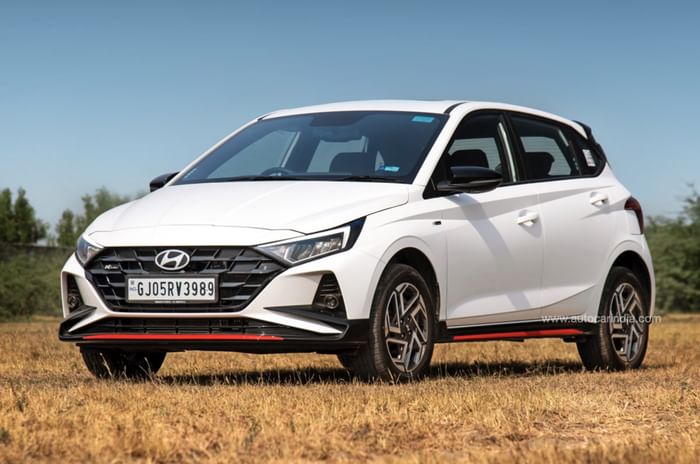
There’s, of course, cosmetic changes and some feature changes, but the biggest change of them all, something which we’d hope Hyundai would have offered right from the start – a proper, 6-speed manual gearbox with three pedals. Naturally, we dived right in.
Hyundai i20 N Line MT engine, gearbox and performance
Let’s begin with the gearbox then: the new 6-speed manual transmission. Gone is the two-pedal clutchless manual – iMT or intelligent manual transmission, as Hyundai calls it – but the dual-clutch auto (DCT) has been retained.
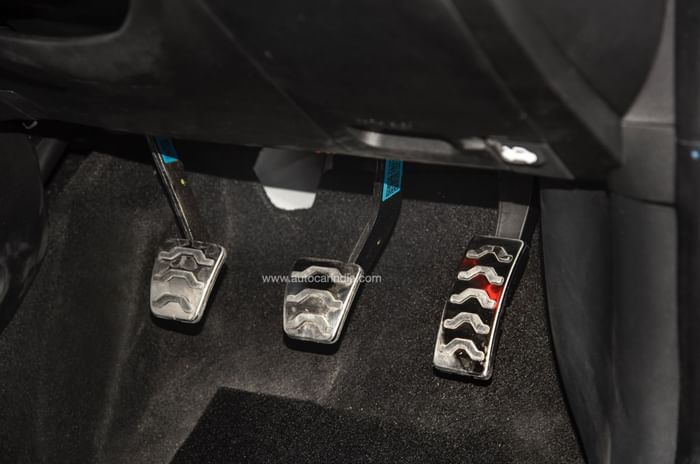
What immediately becomes apparent from the moment you set off is that this clutch pedal is springy and the bite point is higher than you’d expect, so you’ll take some time getting used to its nature. But once you do get to grips with it, the whole experience becomes enjoyable. The manual does a good job of masking this turbo-petrol engine’s initial lag. The shifts themselves are smooth and the gates are well defined. On the whole, it definitely feels more involving to drive than the DCT or the iMT it replaces.
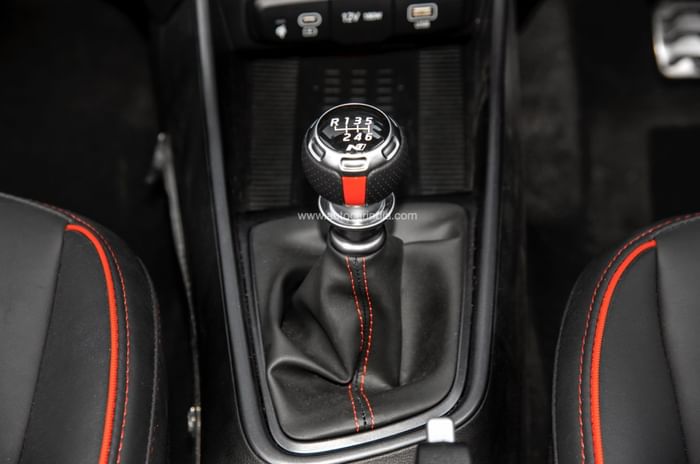
The engine is carried over as is – it’s a 120hp, 1.0-litre, three-cylinder turbo-petrol – but crucially, this is now offered only with the N Line and not with the regular i20, creating a further distinction for the N Line. It retains its strong mid-range punch and rev-happy nature, and it’ll pull cleanly till the 6,500rpm redline.

As for performance, the N Line manual did the 0-100kph sprint in 10.66 secs, compared to the DCT’s 11.31 secs. The reason the manual is quicker is that it enables you to launch it harder than the DCT, which feels rather conservative in its launch. At 1,071kg, the MT is also 15kg lighter, which will have a minor effect on performance too.
| Hyundai i20 N Line performance | ||
|---|---|---|
| 6-speed manual* | 7-speed DCT | |
| 0-60kph | 4.57 secs* | 5.37 secs |
| 0-100kph | 10.66 secs* | 11.31 secs |
* Figures not as per Autocar test standards
What’s also nice is that it has a nice raspy exhaust note, but it’s barely audible inside the cabin though.
Hyundai i20 N Line MT ride and handling
What really sets the N Line apart from the regular car is the ride and handling character. Like the pre-facelift, the N Line continues to get 30 percent stiffer damping for the suspension and a retuned steering too.
The upgraded suspension enhances the N Line’s sporty character, reduces body roll in the bends and enables it to corner flatter. And this doesn’t come with a big deterioration in ride comfort. Sure, it does feel stiffer on bad roads, but it's never unsettling and it improves high-speed stability too. The steering, meanwhile, has a good heft to it and it is feelsome. It takes away the vagueness from the normal i20 and makes it feel sharper around corners, which only enhances the engagement. Bottom line is, the i20 N Line is clearly a fun-to-drive hatch.
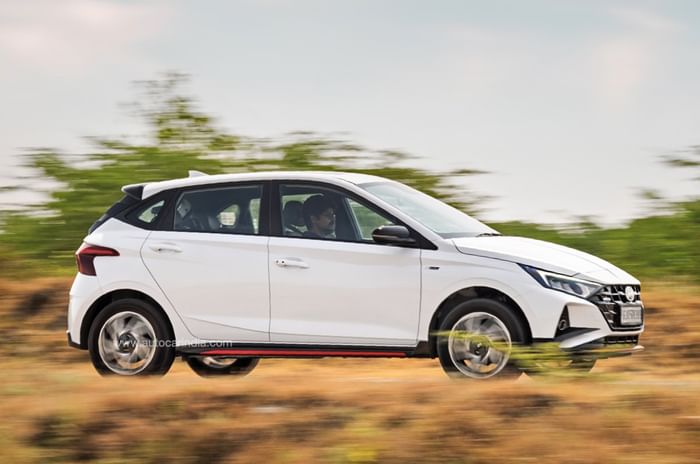
It also continues to get disc brakes at all corners, unlike the regular i20, which uses drums at the rear, and this gives the N Line a more surefooted feel under hard braking.
Hyundai i20 N Line MT interior and features
In terms of interior changes, apart from the obvious addition of a third pedal, the N Line facelift now gets Hyundai’s new 10.25-inch touchscreen with a physical knob for the volume control, but it still misses out on wireless smartphone integration. The other change is a new USB Type C port in the centre console.
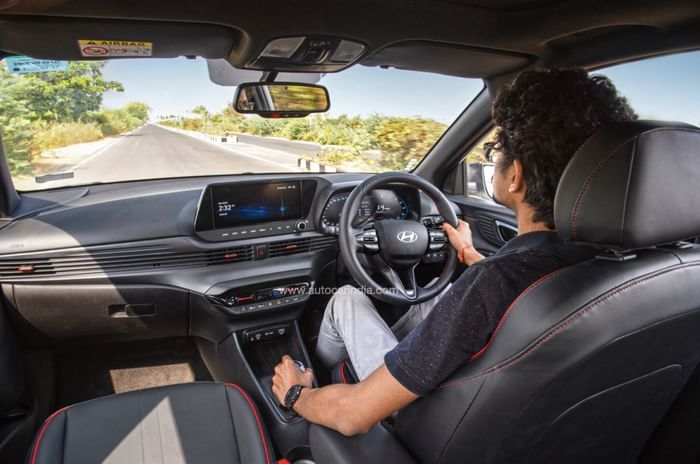
The all-black theme with the contrasting red elements do a good job of conveying this hatch’s sporty intent. I particularly like the steering wheel, which has been lifted straight off the full-fat i20 N Line – it’s great to hold and to look at with its N badging and red stitching – and the gear lever which feels really high quality. Sure, there are some hard and scratchy plastics around but quality on the whole is good. The seats are comfy and spacious but more side bolstering on the front seats would have been welcome in keeping with its sporty theme. It also remains as practical as before, with plenty of cubby spaces, sizeable door pockets and a 311-litre boot. Space at the back is ample too, and can fit six-footers with ease.
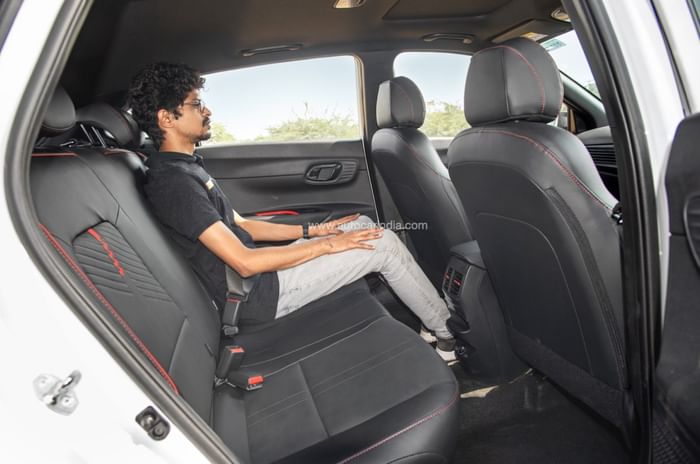
As for features, the i20 N Line facelift remains the best-equipped hatchback on the market. This top-spec N8 variant we tested came with six airbags, a sunroof, a large touchscreen, a digital instrument cluster, a wireless phone charger, red ambient lighting, LED lights, a Bose audio system and connected car tech.
Hyundai i20 N Line MT exterior
Like on the inside, the changes to the N Line’s exterior are very subtle and you’ll be hard-pressed to tell it apart from the older car. The easiest way to identify the facelift is the alloys – it now gets a much sportier design and polished edges. Other changes include full LED headlamps and the front grille – which loses the chequered flag-pattern inserts – and, of course, the new 2D Hyundai logo.
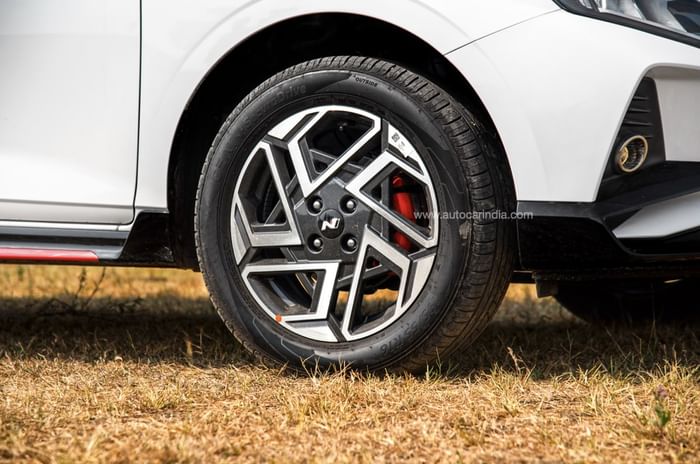
New, diamond-cut 16-inch alloys fit in with the N Line's character.
There’s sportier bumpers, twin exhaust tips, a rear spoiler element with side flaps, red detailing on the front bumper and side skirts, red brake calipers and N Line badging on the boot, front fender and front grille. Overall, the N Line has the looks you’d expect from a sporty hatch and enough to set it apart from the rest of the i20 range.
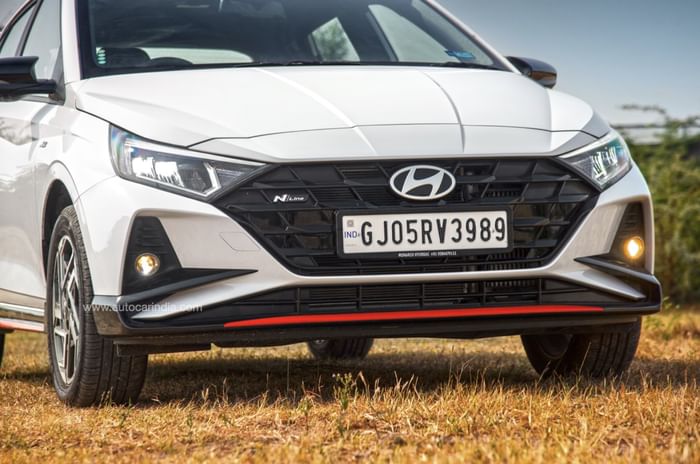
Hyundai i20 N Line MT price and verdict
The Hyundai i20 N Line facelift is priced from Rs 9.99 lakh to Rs 12.47 lakh (ex-showroom, Delhi). In comparison, the N Line’s only closest rival is, perhaps, the Tata Altroz iTurbo, which costs between Rs 9.10 lakh-10 lakh (ex-showroom, Delhi), but the Altroz is not nearly as well equipped nor as engaging to drive, and doesn’t have an automatic option.
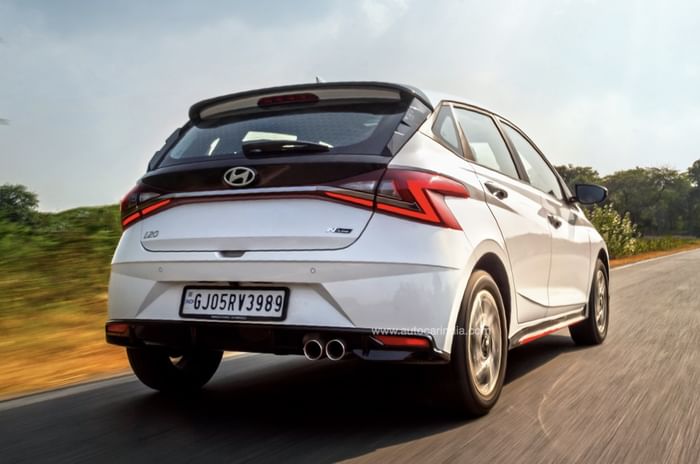
The N Line was always a nice-to-drive, sporty hatchback and replacing the iMT with a regular three-pedal manual is in keeping the character and takes the experience up a notch. It still offers the core strengths of the i20 like space, practicality and lengthy features list, which family buyers will appreciate, with the added dose of sportiness and driver involvement, which enthusiasts will appreciate. So while the i20 N Line may be your only choice of a performance-oriented and practical hatch, with this update, it's also a very good choice.





































